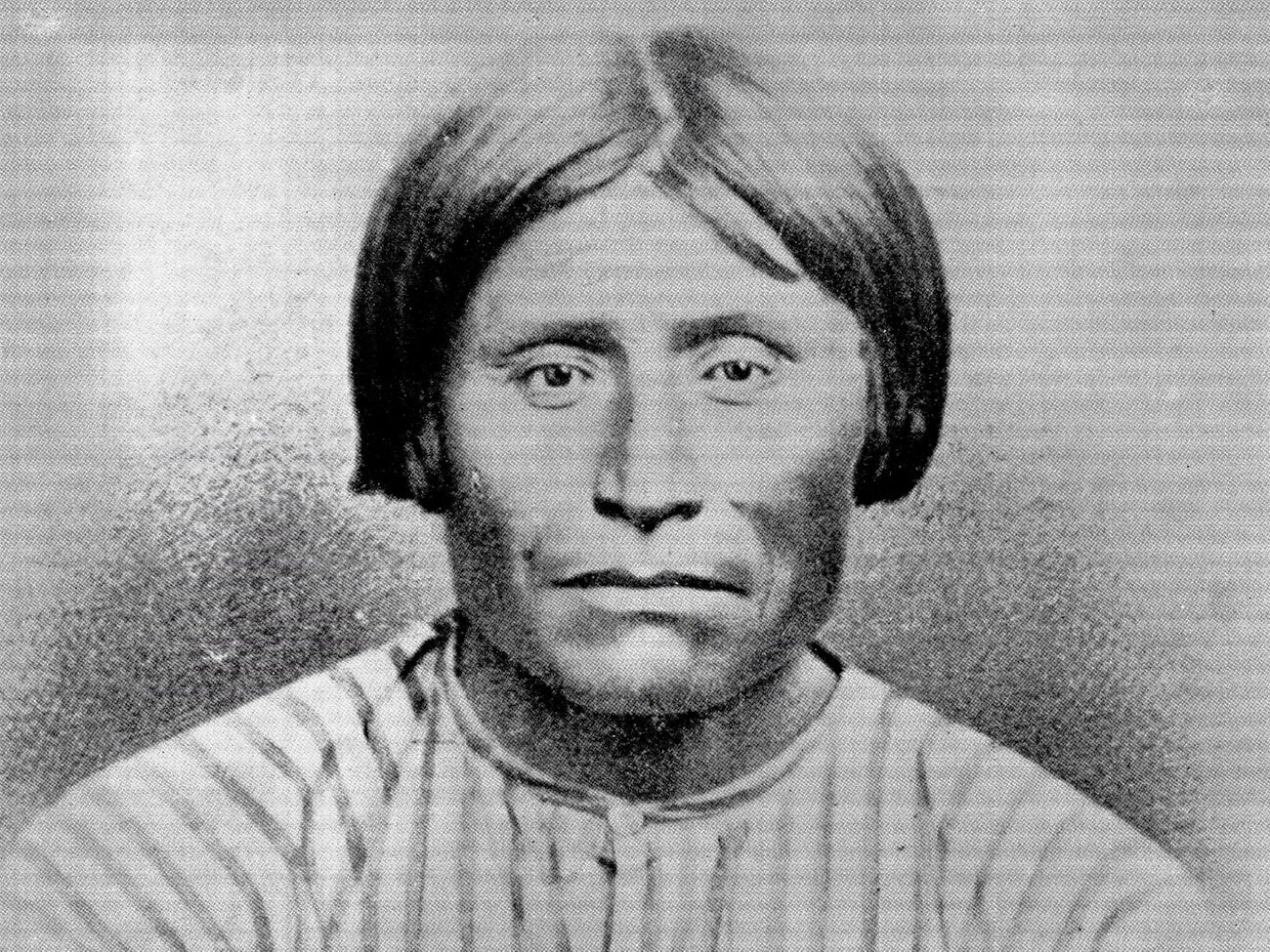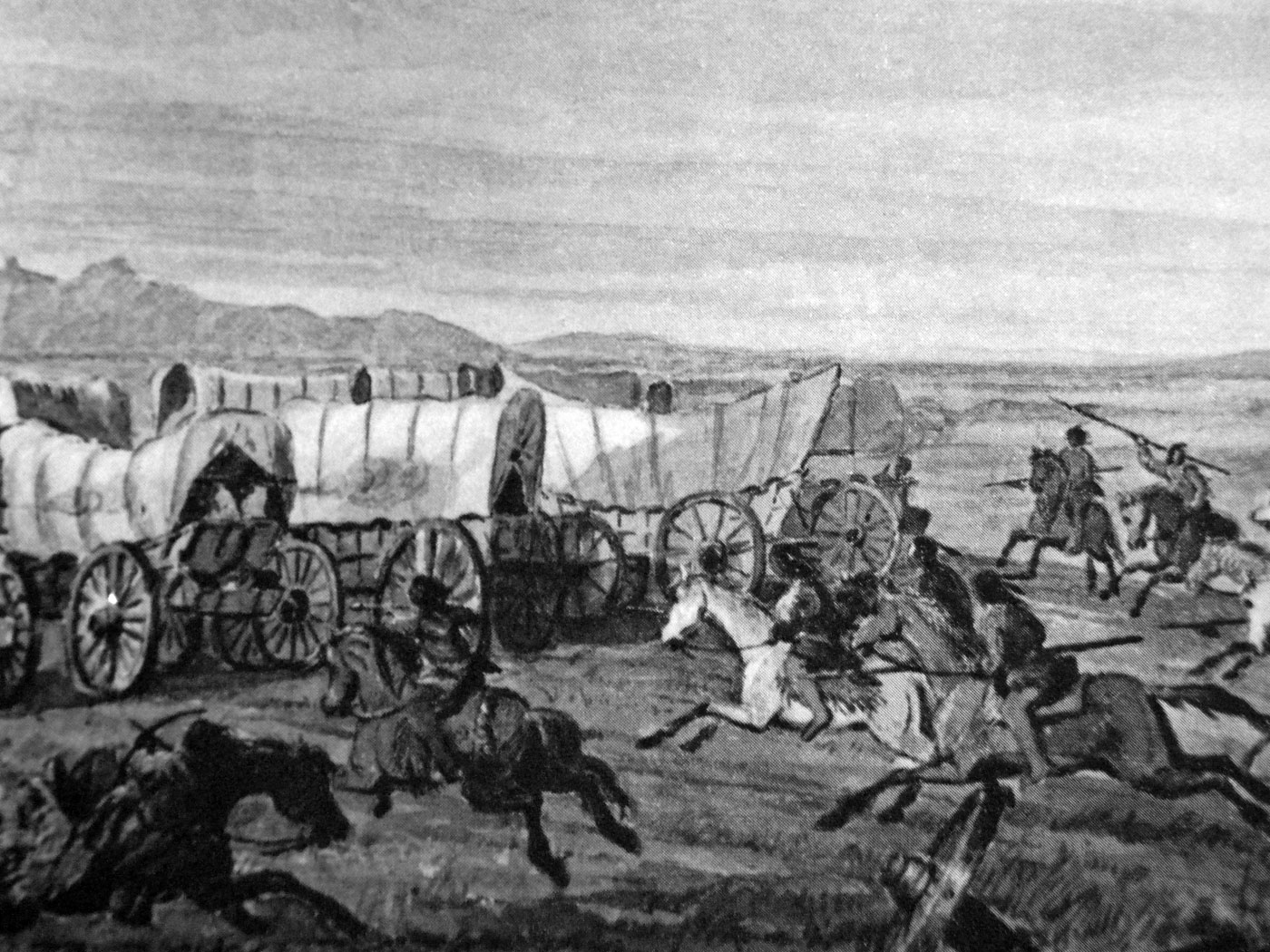
Buffalo Hunting
It is believed that buffalo(bison) hunting began approximately 11,000 years ago, and it lasted until the end of the 19th century. At the time of the first European contact, 60 million American bison populated the 750,000 square mile Great Plains. Then, when buffalo hide prices rose to three dollars apiece, buffalo were killed by the millions. At the time, the average person worked a week to make that kind of money. It was believed by many, including those in the military, that the extermination of the buffalo would put an end to the Native American once and for all. After all, Plains Indians used buffalo for food, clothing, and shelter. Hunting buffalo was essential for their survival. By the late 1880's only about 1,000 still survived.

Captain Jack and the Modoc War
The last major campaign to be fought against Native Americans in California occurred in one of the most inhospitable locations in the entire nation. The Lava Beds in northeastern California consist of 72 square miles of razor sharp black volcanic rock, narrow canyons, and caves. This area, which is now a national park, was once home to the Modoc Indian tribe. Their population probably was never larger than 400 hundred, and today the same area is still sparsely populated. It has been said, that the only good thing about living in this location was it's natural defensive terrain. In fact, the Modoc found it easy to defend against intruders.

Dendrochronology
One of the most reliable and inexpensive ways to determine the age of archaeological remains is called dendrochronology. In the early 20th century dendrochronology, which is also called tree-ring dating, provided archaeologists with precise dates for all of the ancient Anasazi (Ancestral Pueblo) sites in the Southwestern United States. Dendrochronology determines dates by examining the annual growth of tree rings. The method was discovered by an astronomer named Andrew E. Douglas who was looking for a way to determine the Sun's energy. He discovered that the year-to-year variations in the growth of the tree-rings was the same over the entire region. In addition, Douglas discovered that the thickness of tree rings was associated with the amount of rainfall that occurred during that year. He determined that each ring in a tree represents one year of growth. Drought years produced narrow growth rings, while years with ample rain produced wider rings. Douglas was fortunate that he began his work in the Southwest because the dry arid environment enhances preservation.

French Indian War
Many historians will tell you that the French Indian Wars were nothing more than a continuation of the frontier fighting that had been occurring for more than 100 years. They refer to a series of wars that took place between 1689 and 1763. The French Indian Wars were fought between the French and the British on what would become colonial America. Native Americans fought for both sides, and against each other. They also fought against settlers in the Ohio Valley, and along the borders of Maryland, Virginia, and Pennsylvania. Warriors for the Seneca and Mohawk fought for the French, while Iroquois warriors fought for the British.

King Philip's War
Massasoit had two sons. His friend, then Governor Winslow, would name them Alexander and Philip. After Chief Massasoit died, Alexander became the chief. However, he would also die suddenly and Philip would become chief. After a while the local settlers began calling him King Philip, but his tribe knew him by the name Metacomet. At first King Philip was as friendly with the Puritans as his father. However, as time passed he and his tribe lost more and more of their native hunting grounds to the new settlers. Unfortunately for them, new settlements were now springing up everywhere. At the time there were already 80,000 white Europeans living in the area we now call Massachusetts.

Powhatan Wars
Chief Powhatan was the leader of over 200 villages and 30 tribal bands in the area we now call Virginia. Eventually, the bands that were under his direction became known as the Powhatan Confederacy. The Puritan settlers had a difficult time pronouncing his real name which was Wahunsonakok. Chief Powhatan was the father of Pocahontas, who is the most famous of all Native American women. From the time that the British first landed in the New World there had been skirmishes between the Powhatan Confederacy and the Jamestown settlers.

Rogue River War
The center of conflict between Native Americans and white Euro-American settlers in the 1850's, was in the Rogue River region of southwestern Oregon. Most of the early conflicts occurred between the Volunteer Oregon Militia, and Native Americans. However, in most areas in Oregon saw very little conflict. In fact, when the population density increased, most of Native Americans either moved or assimilated with the new white culture. Unfortunately, things were much different in the Rogue River region. Here existed a confederation of tribes that became known as the Rogue River Indians. They were in fact not a group of tribes, but instead a confederacy of small bands including the Klamath, Umpqua, Tutuni, Shasta, and Coquille tribes.

Seminole Wars
The last major conflicts east of the Mississippi River, involved the Seminoles . The Seminoles were the dominate tribe in the area that we now call Florida. There were two Seminole Wars. The first one was a series of skirmishes that occurred while this area was still under Spanish control. In 1818, the Seminoles were joined by Red Stick Creek warriors during a series of border raids as far north as present day Georgia. In response, the United States directed war hero Andrew Jackson to put down the conflict. As usual, Jackson was the aggressor. Jackson led a force of 800 U.S. Army regulars, 1000 Tennessee volunteers, 1,000 Georgia militia and 1,400 Creek Indians. He and his force attacked both Seminole strongholds and Spanish outposts. His aggressiveness and the size of his army is believed to be the reason why Spain became so eager to sell Florida. They simply didn't believe that they could stop him from taking it, so they sold the territory cheaply.

Tanto Basin War
During the year of 1871, Apache raids against settlers hit epidemic proportions. Due to the enormous onslaught of raids the War Department elected to establish a new Military Department of Arizona, which established its headquarters near Prescott. At the time, the Indian Bureau in Arizona consisted of a series of supply depots and temporary reservations whose existence had become essential for those Apaches who wanted to subscribe to the peace process. It was at these locations that they obtained food rations and supplies. Unfortunately, many of the younger Apaches were not interested in the peace process, and they had no intention of giving up their way of life.

Trail of Tears
During the first part of the 18th Century, the majority of the Native Americans on the Atlantic coast had found themselves pushed out of their native lands, or they had died from exposure to European diseases. At the same time, the population of areas like New England had become increasingly populated. For example, the state of Georgia saw a six-fold increase in population between the years 1790 and 1830. As the United States grew, so did the hostile towards the Native Americans. The new white European settlers were against the idea of coexisting with Native Americans, and they called for their eviction. They believed the the United States should be comprised of only states that were east of the Mississippi River. They wanted all of the Native Americans to be relocated west of the Mississippi River where they believed there was plenty of room for them.

Ute War
The Ute had remained passive since the Treaty of 1868. Under terms of the treaty they were granted large tracts of land in western Colorado and eastern Utah in exchange for their lands in New Mexico. However, a few years later, in 1873, white settlers and prospectors were swarming over the Utes land. Once more they were forced to give up substantial holdings in order to stop the hostilities that were occurring. Then, when Colorado became a state in 1876, there were demands that the Ute be removed from the state completely. At the time the Ute chief was a man named Ouray, and he didn't like what he was hearing.
